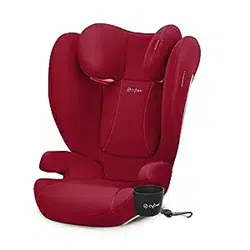Loading ...
Loading ...
Loading ...

7
WHEN TO PLACE YOUR CHILD IN A BOOSTER SEAT
Booster seats raise the child up and help to position
the vehicle lap and shoulder belt correctly. When the
child is properly restrained in a booster seat, their
risk of injury in all types of crashes is reduced.
It is important for the
child to sit properly
within the vehicle seat
belts. When the vehicle
seat belt is buckled, the lap
belt must be positioned low
and snug at the child’s
hips A, and the shoulder
belt should lie across the
middle of the shoulder
B. If the child leans out or
moves the belt behind the
back or places it under the arm, it will not provide
the intended restraint.
There are a number of things to consider when
deciding whether the child is ready to sit in a booster
seat, including: the weight and height rating on their
current child seat, the child’s own weight and height,
their maturity, and the seating positions available in
your vehicle.
How is a booster seat used?
Using a booster seat is very similar to buckling
yourself into the vehicle:
• Read the instruction manuals for both the booster
seat and the vehicle before you start.
• Put the booster in the back seat in a location with
a lap and shoulder belt. Never use a booster with
only a lap belt, as this could cause serious injuries.
• After the child is in the booster, pull the lap and
shoulder belt across him/her and buckle it.
• Check that the shoulder belt lies across the middle
of the shoulder and that the lap belt is low on the
hips.
How can you tell if your child is ready to
transition to a booster seat?
You should consider using a booster seat if the
following conditions apply:
• The child is mature enough to sit in the booster seat
and not put the belts under their arm or behind their
back.
• The child is approaching the weight or height limit of
the child restraint they are currently using.
• Your vehicle does not have a tether anchorage
available, but does have a lap/shoulder seat belt in
the rear seat.
A
B
Loading ...
Loading ...
Loading ...
